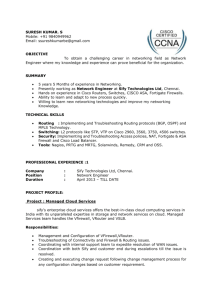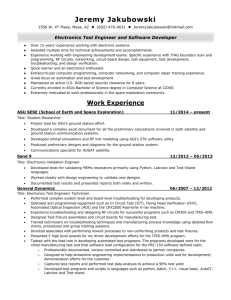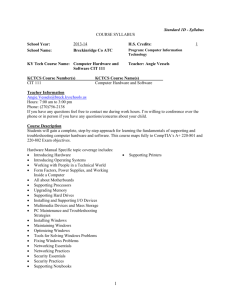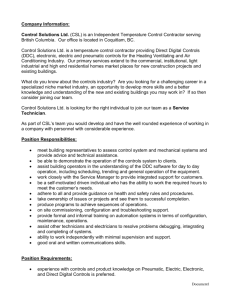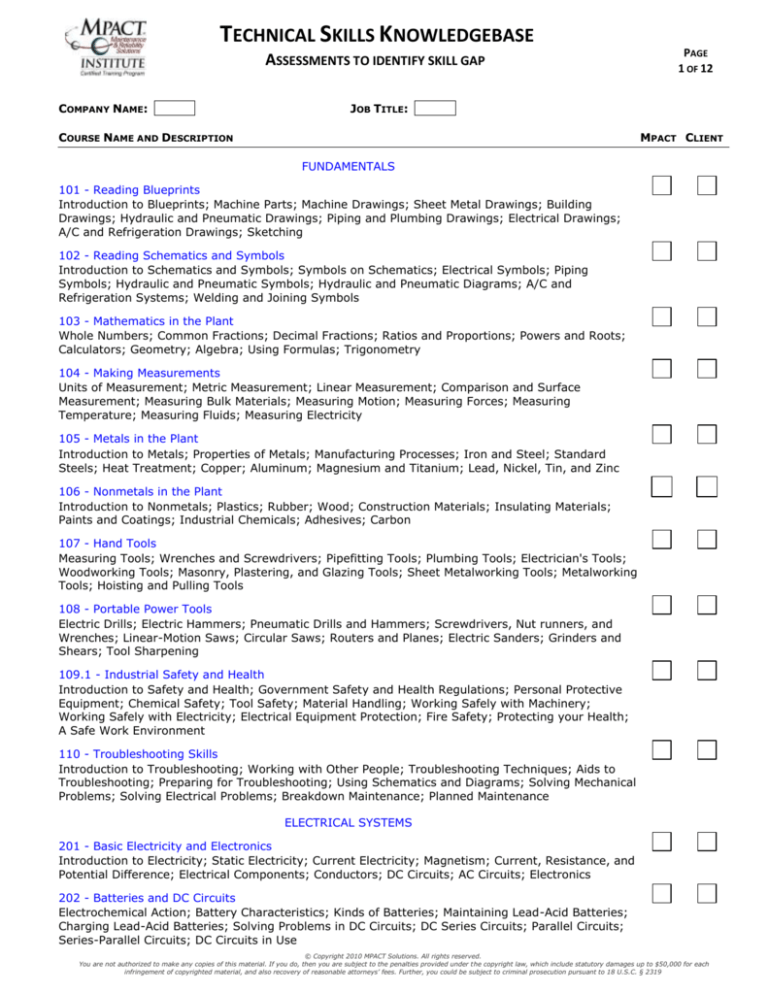
TECHNICAL SKILLS KNOWLEDGEBASE
ASSESSMENTS TO IDENTIFY SKILL GAP
COMPANY NAME:
PAGE
1 OF 12
JOB TITLE:
COURSE NAME AND DESCRIPTION
MPACT CLIENT
FUNDAMENTALS
101 - Reading Blueprints
Introduction to Blueprints; Machine Parts; Machine Drawings; Sheet Metal Drawings; Building
Drawings; Hydraulic and Pneumatic Drawings; Piping and Plumbing Drawings; Electrical Drawings;
A/C and Refrigeration Drawings; Sketching
102 - Reading Schematics and Symbols
Introduction to Schematics and Symbols; Symbols on Schematics; Electrical Symbols; Piping
Symbols; Hydraulic and Pneumatic Symbols; Hydraulic and Pneumatic Diagrams; A/C and
Refrigeration Systems; Welding and Joining Symbols
103 - Mathematics in the Plant
Whole Numbers; Common Fractions; Decimal Fractions; Ratios and Proportions; Powers and Roots;
Calculators; Geometry; Algebra; Using Formulas; Trigonometry
104 - Making Measurements
Units of Measurement; Metric Measurement; Linear Measurement; Comparison and Surface
Measurement; Measuring Bulk Materials; Measuring Motion; Measuring Forces; Measuring
Temperature; Measuring Fluids; Measuring Electricity
105 - Metals in the Plant
Introduction to Metals; Properties of Metals; Manufacturing Processes; Iron and Steel; Standard
Steels; Heat Treatment; Copper; Aluminum; Magnesium and Titanium; Lead, Nickel, Tin, and Zinc
106 - Nonmetals in the Plant
Introduction to Nonmetals; Plastics; Rubber; Wood; Construction Materials; Insulating Materials;
Paints and Coatings; Industrial Chemicals; Adhesives; Carbon
107 - Hand Tools
Measuring Tools; Wrenches and Screwdrivers; Pipefitting Tools; Plumbing Tools; Electrician's Tools;
Woodworking Tools; Masonry, Plastering, and Glazing Tools; Sheet Metalworking Tools; Metalworking
Tools; Hoisting and Pulling Tools
108 - Portable Power Tools
Electric Drills; Electric Hammers; Pneumatic Drills and Hammers; Screwdrivers, Nut runners, and
Wrenches; Linear-Motion Saws; Circular Saws; Routers and Planes; Electric Sanders; Grinders and
Shears; Tool Sharpening
109.1 - Industrial Safety and Health
Introduction to Safety and Health; Government Safety and Health Regulations; Personal Protective
Equipment; Chemical Safety; Tool Safety; Material Handling; Working Safely with Machinery;
Working Safely with Electricity; Electrical Equipment Protection; Fire Safety; Protecting your Health;
A Safe Work Environment
110 - Troubleshooting Skills
Introduction to Troubleshooting; Working with Other People; Troubleshooting Techniques; Aids to
Troubleshooting; Preparing for Troubleshooting; Using Schematics and Diagrams; Solving Mechanical
Problems; Solving Electrical Problems; Breakdown Maintenance; Planned Maintenance
ELECTRICAL SYSTEMS
201 - Basic Electricity and Electronics
Introduction to Electricity; Static Electricity; Current Electricity; Magnetism; Current, Resistance, and
Potential Difference; Electrical Components; Conductors; DC Circuits; AC Circuits; Electronics
202 - Batteries and DC Circuits
Electrochemical Action; Battery Characteristics; Kinds of Batteries; Maintaining Lead-Acid Batteries;
Charging Lead-Acid Batteries; Solving Problems in DC Circuits; DC Series Circuits; Parallel Circuits;
Series-Parallel Circuits; DC Circuits in Use
© Copyright 2010 MPACT Solutions. All rights reserved.
You are not authorized to make any copies of this material. If you do, then you are subject to the penalties provided under the copyright law, which include statutory damages up to $50,000 for each
infringement of copyrighted material, and also recovery of reasonable attorneys’ fees. Further, you could be subject to criminal prosecution pursuant to 18 U.S.C. § 2319
TECHNICAL SKILLS KNOWLEDGEBASE
ASSESSMENTS TO IDENTIFY SKILL GAP
COMPANY NAME:
PAGE
2 OF 12
JOB TITLE:
COURSE NAME AND DESCRIPTION
MPACT CLIENT
203 - Transformers and AC Circuits
Principles of Alternating Current; Mathematics in AC Circuits; Inductance and Inductive Reactance;
Capacitance and Capacitive Reactance; Impedance; Power and Energy in AC Circuits; Three-Phase
Circuits; Principles of Transformers; Transformer Applications; Maintaining Transformers
204.1 - Electrical Measuring Instruments
Principles of Meter Operation; Ammeters, Voltmeters, and Watt-meters; Resistance Measurement;
Multi-meters; Oscilloscopes
205.1 - Electrical Safety and Protection
Electrical Hazards; Electrical Safety Equipment; Electrical Safety Procedures; Grounding, Ground
Faults, and Short Circuits; Fuses and Circuit Breakers; Motor Protection
206 - DC Equipment and Controls
DC Power in Industry; DC Electromagnets; DC Generators; DC Motors; DC Armatures; DC Relays;
DC Controllers; DC Power Supplies; Silicon-Controlled Rectifiers
207 - Single-Phase Motors
Introduction to Single-Phase Motors; Split-Phase Motors; Capacitor Motors; Repulsion Motors;
Universal Motors; Special Motors; Synchros; Servos; Motor Installation; Motor Maintenance
208 - Three-Phase Systems
Principles of Three-Phase Motors; Induction Motors; Synchronous Motors; Multispeed Motors;
Maintaining Three-Phase Motors; Motor Starters; Three-Phase Motor Controllers; Alternators;
Auxiliary Generator Systems; Power Distribution Systems
209 - AC Control Equipment
Motor Starters; Switches and Controls; Limit Switches; Special Control Switches; Timers and
Counters; Control Relays; Equipment for Hazardous Locations; Special Motor Controls; Motor control
Centers; Control Panel Wiring
210 - Electrical Troubleshooting
Troubleshooting with Electrical Schematics; Troubleshooting with Building Drawings; Troubleshooting
with Control Circuits; Troubleshooting Combination Starters; Troubleshooting Control Devices;
Troubleshooting Special Controls; Troubleshooting DC Motors; Troubleshooting AC Motors;
Troubleshooting Lighting Systems; Saving Time in Troubleshooting
MECHANICAL SYSTEMS
301 - Basic Mechanics
Forces and Motion; Work, Energy and Power; Fluid Mechanics; Simple Machines; Machine Elements;
Measurement Tools and Instruments; The Safe Use of Hand Tools; The Safe Use of Portable Power
Tools; Fasteners; Friction and Wear
302 - Lubricants and Lubrication
Principles of Lubrication; Characteristics of Lubricants; Additives, Lubricating Action, and Bearing
Lubrication; Oils and Their Applications; General-Purpose Greases; Special-Purpose Greases and DryFilm Lubricants; Lubrication Systems and Methods; Automatic Lubrication Methods; Lubricant
Storage and Handling; Lubrication Management
303.1 - Power Transmission Equipment
Belt Drives; Chain Drives; Gears; Gear Drives; Adjustable-Speed Drives; Shaft Alignment; Shaft
Coupling Devices; Clutches and Brakes
304 - Bearings
Bearings and Shafts; Plain Journal Bearings I; Plain Journal Bearings II; Antifriction Bearings I;
Antifriction Bearings II; Ball and Roller Bearings; Specialized Bearings; Bearing Seals; Lubrication;
Bearing Maintenance
© Copyright 2010 MPACT Solutions. All rights reserved.
You are not authorized to make any copies of this material. If you do, then you are subject to the penalties provided under the copyright law, which include statutory damages up to $50,000 for each
infringement of copyrighted material, and also recovery of reasonable attorneys’ fees. Further, you could be subject to criminal prosecution pursuant to 18 U.S.C. § 2319
TECHNICAL SKILLS KNOWLEDGEBASE
ASSESSMENTS TO IDENTIFY SKILL GAP
COMPANY NAME:
PAGE
3 OF 12
JOB TITLE:
COURSE NAME AND DESCRIPTION
MPACT CLIENT
305 - Pumps
Pump Development and Application; Basic Pump Hydraulics; End-Suction Centrifugal Pumps;
Propeller and Turbine Pumps; Rotary Pumps; Reciprocating Pumps; Metering Pumps; SpecialPurpose Pumps; Packings and Seals; Pump Maintenance
306 - Piping Systems
Introduction to Piping Systems; Metal Piping; Nonmetallic Piping; Tubing; Hoses; Fittings; Common
Valves; Special Valves; Strainers, Filters and Traps; Accessories
307 - Basic Hydraulics
Principles of Hydraulics; Hydraulic Fluids; Strainers and Filters; Reservoirs and Accumulators;
Hydraulic Pumps; Piping, Tubing, and Fittings; Directional Control Valves; Pressure Control Valves;
Cylinders; Hydraulic Motors
308 - Hydraulic Troubleshooting
Hydraulic Systems; Hydraulic Schematic Diagrams; Installing Hydraulic Components; Installing Pipe
and Tubes; Selecting Hydraulic Fluids; Planning System Maintenance; Troubleshooting Systems;
Troubleshooting Valves; Troubleshooting Cylinders; Troubleshooting Pumps and Motors
309 - Basic Pneumatics
Pneumatic Principles; Reciprocating Compressors; Rotary Compressors; Primary Air Treatment;
Secondary Air Treatment; Piping, Hoses, and Tubing; Directional Control Valves; Pressure-Control
Valves; Pneumatic Cylinders; Pneumatic Motors and Rotary Actuators
310 - Pneumatic Troubleshooting
Pneumatic Systems; Pneumatic Schematic Diagrams; Installation of System Components; System
Maintenance; Determining System Failures; Troubleshooting Air Compressors; Troubleshooting
Control Valves; Troubleshooting Cylinders; Troubleshooting Air Motors; Pneumatic/Hydraulic Systems
AIR CONDITIONING AND REFRIGERATION
431 - The Refrigeration Cycle
Refrigeration and Air Conditioning Basics; Heat, Pressure, and Change of State; The Basic
Refrigeration Cycle; Air Properties and Simple Psychrometrics; Tools, Test Instruments, and Safe
Work Practices
432 - Refrigerants and Refrigerant Oils
Physical Properties of Refrigerants; Refrigerant Classifications and Applications; Refrigerants and the
Atmosphere; Refrigerants and the TPA; Refrigerant Filters and Driers; Tools and Procedures for
Working with Refrigerants; Refrigerant Oils, Oil Maintenance, and Service Procedures
433 - Compressors
Introduction to Compressors; Reciprocating Compressors; Rotary, Helical, and Scroll Compressors;
Centrifugal Compressors; Compressor Motors; Compressor Control and Protection; Compressor
Maintenance, Troubleshooting, and Repair
434 - Evaporators and Metering Devices
Introduction to Evaporators; Direct Expansion Evaporators and Secondary Refrigeration Systems;
Improving Evaporator Performance; Defrosting, Maintaining, and Troubleshooting Evaporators
435 - Condensers and Cooling Towers
Air-Cooled Condensers; Water-Cooled Condensers; Cooling Towers and Spray Ponds; Evaporative
Condensers; Controlling Water-Related Problems
436 - Piping
Piping Materials and Fittings; Discharge Line; Liquid Line; Suction Line; Piping Systems Maintenance
© Copyright 2010 MPACT Solutions. All rights reserved.
You are not authorized to make any copies of this material. If you do, then you are subject to the penalties provided under the copyright law, which include statutory damages up to $50,000 for each
infringement of copyrighted material, and also recovery of reasonable attorneys’ fees. Further, you could be subject to criminal prosecution pursuant to 18 U.S.C. § 2319
TECHNICAL SKILLS KNOWLEDGEBASE
ASSESSMENTS TO IDENTIFY SKILL GAP
COMPANY NAME:
PAGE
4 OF 12
JOB TITLE:
COURSE NAME AND DESCRIPTION
MPACT CLIENT
437 - Control Systems
Introduction to Control Systems; Sensors and Controlled Devices; Automatic Control Systems;
Control of Refrigeration and Air-Conditioning Processes; Maintaining and Troubleshooting Controls
438 - Air-Handling Systems
Air Movement and Distribution; Fans and Fan Motors; Ductwork Types, Fabrication, and Repair; Air
Filtration; Air System Balancing and Troubleshooting; Indoor Air Quality and Sick Building Syndrome
439 - System Troubleshooting
Preparation for Troubleshooting; Troubleshooting Procedures; Troubleshooting Electric Controls;
Troubleshooting Pneumatic Controls; Troubleshooting The Refrigerant Circuit
440 - Absorption Chillers
Principles of Absorption Chiller Systems; Water/Lithium Bromide Absorption Systems; Lithium
Bromide Absorption - Controls and Maintenance; Ammonia/Water Absorption Systems; Evolving
Absorption Systems; Absorption Systems vs. Mechanical Compression Systems
441 - Heat Pumps
Introduction to Heat Pumps; Heat Pump Systems; Balance Points and Cost of Operation; Heat Pump
Components; Heat Pump Controls; Heat Pump Installation; Heat Pump Checkout and Startup
442 - Heating System Basics
Heat Energy; Personal Comfort and Heat Distribution Systems; Combustion; Chimneys and Venting;
forced-Air Systems
443 - Heating System Equipment
Gas Heating Equipment; Oil Heating Equipment; Electrical Heating Systems; Solid-Fuel Furnaces and
Furnace Performance Criteria; Hydronic Systems; Other Heating System Equipment
AMMONIA REFRIGERATION
461 - Ammonia Refrigeration Basics
Ammonia Characteristics; Single-Stage Ammonia Systems; Two-Stage Ammonia Systems; Suction
Accumulators and Intercoolers; Liquid Overfeed Systems
462 - Positive-Displacement Compressors
Reciprocating Compressors; Sliding-Vane Rotary Booster Compressors; Oil-Flooded Screw
Compressors; Screw Compressor Units; Ammonia Systems Lubrication Oil Management
463 - Evaporators, Condensers, and Controls
Liquid Ammonia Evaporator Supply Methods; Evaporators; Air Unit Defrost Systems; Evaporative
Condensers; Control Valves and Switches
464 - Purging, Piping and Safety
Purging Air and Non-condensables; Ammonia System Piping; Ammonia System Safety Codes and
Guidelines; OSHA Process Safety Management; EPA Regulations and Ammonia Safety
BUILDINGS AND GROUNDS
361 - Introduction to Carpentry
Layout and Hand Tools; Carpenter's Power Tools; Lumber, Wood Products, and Fasteners; Estimating
Carpentry Costs; Plans, Specifications, and Codes; Constructing the Building Shell
362 - Constructing the Building Shell
Footings; Foundations, and Forms; Framing the Structure; Framing the Roof with a Framing Square;
Installing Windows and Exterior Doors; Installing Roofing and Siding
© Copyright 2010 MPACT Solutions. All rights reserved.
You are not authorized to make any copies of this material. If you do, then you are subject to the penalties provided under the copyright law, which include statutory damages up to $50,000 for each
infringement of copyrighted material, and also recovery of reasonable attorneys’ fees. Further, you could be subject to criminal prosecution pursuant to 18 U.S.C. § 2319
TECHNICAL SKILLS KNOWLEDGEBASE
ASSESSMENTS TO IDENTIFY SKILL GAP
COMPANY NAME:
PAGE
5 OF 12
JOB TITLE:
COURSE NAME AND DESCRIPTION
MPACT CLIENT
363 - Finishing the Building Interior
Interior Walls and Ceilings; Laying Flooring; Stair Construction; Interior Doors and Door Jambs;
Installing Interior Trim
364 - Structural Painting
Paint Selection for Normal Conditions; Coatings for Extreme Conditions; Painting tools; Surface
Preparation; Painting Techniques; Ground and Aerial Supports; Handling Hazardous Materials Safely
366 - Flat Roof Maintenance
Introduction To Flat Roof Systems; Roof-Related Components; Causes of Common Roof Problems;
Roof Inspection; Preventive Maintenance and Repair; Single-Ply Roofing
367 - Plumbing Systems Maintenance
Introduction to Plumbing; Plumbing Fixtures; Sanitary Drainage Systems; Vent Systems; Storm
Water Drainage; Potable Water Distribution; Hot Water Distribution; Valves; Piping Assembly
Procedures; Maintaining Plumbing Systems
374 - Locks and Key Systems
Commonly Used Doors and Locks; How Locks Operate; Installing Locks; Maintaining and Adjusting
Locks; Key Control and Master Key Systems
375 - Landscaping Maintenance
Basic Plant Care; Shade Trees; Turf Management; Shrub and Flower Care; Pest and Disease Control
CUSTODIAL MAINTENANCE
451 - Cleaning Chemicals
Using Chemicals Safely; Introduction to Cleaning Chemicals; Cleaning Agents; Disinfectants; SpecialPurpose Cleaning Chemicals
452 - Floors and Floor Care Equipment
Kinds of Flooring; Floor Machines; Vacuum Cleaners; Automatic Scrubbers; Other Powered
Equipment
453 - Maintaining Floors and Other Surfaces
Routine Floor Care Tasks; Floor Coatings; Periodic Floor Care Tasks; Choosing a Floor Care Method;
Floor Care Problems; Other Cleaning Tasks
454 - Rest Room Care
Rest Room Basics; Routine Rest Room Cleaning; Cleaning Plumbing Fixtures; Periodic Rest Room
Cleaning; Rest Room Disinfection
455 - Carpet and Upholstery Care
Carpet Materials and Construction; Preventive Maintenance and Routine Carpet Cleaning; Periodic
Carpet Cleaning; Carpet Care Problems; Upholstery Care
ELECTRONICS
251 - Semiconductors
Introduction to Semiconductors; Environmental Conditions; Printed Circuit Boards; Transistors and
Integrated Circuits; Packages and Performance Analysis
252 - Power Supplies
Power Supplies and Power Conditioners; Cells and Batteries; Rectifiers; Filters; Voltage Regulators;
Troubleshooting Power Supplies
253 - Amplifiers
Introduction to Amplifiers; Single-Stage Amplifiers; Amplifier Performance and Multistage Amplifiers;
Op Amps; Troubleshooting Amplifiers
© Copyright 2010 MPACT Solutions. All rights reserved.
You are not authorized to make any copies of this material. If you do, then you are subject to the penalties provided under the copyright law, which include statutory damages up to $50,000 for each
infringement of copyrighted material, and also recovery of reasonable attorneys’ fees. Further, you could be subject to criminal prosecution pursuant to 18 U.S.C. § 2319
TECHNICAL SKILLS KNOWLEDGEBASE
ASSESSMENTS TO IDENTIFY SKILL GAP
COMPANY NAME:
PAGE
6 OF 12
JOB TITLE:
COURSE NAME AND DESCRIPTION
MPACT CLIENT
254 - Oscillators
Introduction to Oscillators; Flip-Flops; Logic Clocks; Filters and Waveforms; Troubleshooting
Oscillators
291 - Digital Logic Systems
Digital Logic Fundamentals; Logic Building Blocks; Medium- and Large-Scale IC's; Functional Logic
Systems; Troubleshooting Logic Systems
ENERGY CONSERVATION
376 - Energy Conservation Basics
Energy and Its Sources; Why the Energy Crisis?; Energy Consumption and Loss; Practical
Conservation Measures; Conducting an Energy Audit
377 - Energy Losses in Buildings
Heat Flow Principles; Heat Loss/Gain Through Roofs; Minimizing Heat Flow Through Walls; Heat
Loss/Gain Through Windows and Doors; Controlling Losses Through Floors
378 - Heating/Cooling System Efficiency
Conditioning the Air; Managing Airflow in HVAC Systems; Conserving Energy in Heating Systems;
Conserving Energy in Cooling Systems; Reducing Losses in Distribution Systems
379 - Mechanical Energy Conservation
Reducing Friction; Cutting Transmission Losses; Pumps, Fans, and Compressors; Elevators and
Conveyor Systems; Improving Vehicle Efficiency
380 - Electrical Energy Conservation
Surveying Electrical Consumption; Using Load Management Techniques; Improving Electrical
Equipment Efficiency; Conducting a Lighting Survey; Evaluating Lamps and Fixtures
FOUNDATIONS OF TECHNOLOGY
391 - Force and Motion
Scalers and Vectors; Motion Along a Straight Line; Acceleration; How to Describe Force; Force and
Acceleration; Equilibrium; Rotational and Circular Motion; Simple Harmonic Motion
INDUSTRIAL HAZARD CONTROL
151 - Chemical Hazards
What the Standard Requires; Types of Chemical Hazards; Material Safety Data Sheets
MACHINE SHOP PRACTICES
315 - Machine Shop Practice
Principles of Machining; Layout Work and Shop Safety; Setup Tools; Setup Measurement; How to
Grind Single-Point Tools; How to Grind Multi-point Tools
316 - Machine Shop Turning Operations
Latches and Attachments; Basic Lathe Operations; Drilling and Boring; Reaming; Threads and
Threading
317 - Machine Shop Shaping Operations
Milling Operations; Shaping and Planning; Grinding Operations; Gear Cutting; Power Sawing
323 - Machine Shop Job Analysis
Machining Cylindrical Shapes; Drilling, Reaming, and Honing; Machining Flat Surfaces; Determining
Tolerances and Finishes; Variables Affecting Job Efficiency
© Copyright 2010 MPACT Solutions. All rights reserved.
You are not authorized to make any copies of this material. If you do, then you are subject to the penalties provided under the copyright law, which include statutory damages up to $50,000 for each
infringement of copyrighted material, and also recovery of reasonable attorneys’ fees. Further, you could be subject to criminal prosecution pursuant to 18 U.S.C. § 2319
TECHNICAL SKILLS KNOWLEDGEBASE
ASSESSMENTS TO IDENTIFY SKILL GAP
COMPANY NAME:
PAGE
7 OF 12
JOB TITLE:
COURSE NAME AND DESCRIPTION
MPACT CLIENT
324 - Lathe-Turning Work Between Centers
Lathe Setup and Workplace Preparation; Rough and Finish Turning; Shouldering, Knurling, and
Notching; Cutting External Threads; Turning Tapers Between Centers
325 - Lathe-Machining Work in a Chuck
Lathe Setup and Workplace Preparation; Rough Turning and Finish Turning; Boring and Counter
boring; Cutting Internal Threads and Boring Tapers; Holding Irregular and Oversize Work pieces
326 - Basic Milling Procedures
Using the Horizontal Milling Machine; Slab Milling Procedures; Milling Slots and Angles; Straddle,
Side, and Face Milling; Milling Key seats, Squares, and Flats
327 - Indexed Milling Procedures
Using the Dividing Head; Dividing Head Setup; Milling Spur Gears; Helical Milling; Milling Cams
328 - Multiple-Machine Procedures
Power Sawing; Drilling Operations; Operating a Horizontal Shaper; Grinding Operations; Boring Mill
Operations
MACHINE TOOL SERIES
161 - Measurements
Linear Measurements; Working with Fractions; Using Calipers and the Rule Depth Gauge; Micrometer
and Vernier Measurement; Developing a Sense of Touch; Working with Decimals in Reading a
Micrometer; Using Vernier Caliper and Micrometer; Other Measuring Instruments
162 - Basic Hand Tools
Fundamental Hand Tools; Machinist's Bench Vise, Files, Ball-Peen Hammers, Chisels, Wrenches,
Screwdrivers, Pliers, etc.; Reamers; Thread and Taps, Types and Usage
163 - Work Planning and Setup
Holding Work on Slotted Tables; Using Clamps, Blocks, Jacks, and Rods; Vises and their Uses;
Production Jig; Holding Work with Chucks, Between Centers, and on Face Plates; Basic Layout: Lines,
Angles, Shapes, Circles, and Three-Dimensional Shapes
164 - Metal Cutting Fundamentals
Ferrous and Nonferrous Metals; Identifying Types of Steels; Characteristics of Metals and Cutting
Techniques; Harig Speed and Feed Calculator
165 - Cutting Tools I
Use, Mounting, and Types of Milling Cutters; Climb vs. Conventional Milling; Lathe Cutting Tools;
Lathe Use; Making a Tool Bit and Grinding a Lathe Bit
166 – Cutting Tools II
Use and Abuse of Twist Drills; Sharpening Twist Drill Bits; Using a Grinding Chart; Grinding Wheels –
How They Work, Their Construction, and their Markings; Mounting a Grinding Wheel; Proper Dressing
and Conditions that Prevent Free Cutting
MATERIAL HANDLING SYSTEMS
331 - Bulk-Handling Conveyors
Conveyor Components; Bulk-Conveyor Belting; Belt Cleaners and Idlers; Feed and Discharge
Devices; Safety and Troubleshooting
MECHANICAL MAINTENANCE APPLICATIONS
341 - Mechanical Drive Maintenance
Chain Drives; Belt Drives; Open Gear Devices; Enclosed Gear Drives; Drive Couplings
© Copyright 2010 MPACT Solutions. All rights reserved.
You are not authorized to make any copies of this material. If you do, then you are subject to the penalties provided under the copyright law, which include statutory damages up to $50,000 for each
infringement of copyrighted material, and also recovery of reasonable attorneys’ fees. Further, you could be subject to criminal prosecution pursuant to 18 U.S.C. § 2319
TECHNICAL SKILLS KNOWLEDGEBASE
ASSESSMENTS TO IDENTIFY SKILL GAP
COMPANY NAME:
PAGE
8 OF 12
JOB TITLE:
COURSE NAME AND DESCRIPTION
MPACT CLIENT
342 - Mechanical and Fluid Drive Systems
Mechanical Brakes and Clutches; Electric Brakes and Clutches; Adjustable-Speed Drives; Fluid
Drives; Complete Drive Systems
343 - Bearings and Shaft Seal Maintenance
Plain Bearings; Installing Antifriction Bearings; Removing and Replacing Antifriction Bearings;
Mounted Antifriction Bearings; Linear Motion Bearings and Shafts
344 - Pump Installation and Maintenance
Basic Pumping Concepts; Maintaining Packings and Seals; Maintaining Centrifugal Pumps;
Overhauling Centrifugal Pumps; Maintaining Rotary Pumps
345 - Maintenance Pipefitting
Piping Dimensions and Terminology; Threaded Piping Systems; Welded Piping Systems; Plastic
Piping Systems; Pipefitting Accessories
346 - Tubing and Hose System Maintenance
Tubing Fundamentals; Installing Tubing; Hydraulic Tubing Systems; Hose Systems; Gaskets,
Sealants, and Adhesives
347 - Valve Maintenance and Piping System Protection
Valve Maintenance; Special Valves; Actuators and Accessories; Valve Selection; Piping System
Protection
MICROPROCESSORS
261 - Introduction to Computers - User Level
Computer Basics; Computer Hardware; Computer Software; Computers and Microprocessors;
Microprocessor Applications
262 - Input/Output Devices I - User Level
Introduction to I/O Devices; Communications Systems; User/Machine Interface; Networks; Specific
System Applications
266 - How Computers Function - Technician Level
Microprocessor Structure; Bus Structures; Memory Devices; Low-Level Computer Languages; HighLevel Computer Languages
267 - Input/Output Devices II - Technician Level
Magnetic and Optical Memory Devices; Signal Converters and Processors; Data Acquisition Systems;
Digital Transmission Standards; Digital I/O Applications
268 - Maintaining/Troubleshooting Computer Systems
Preventive Maintenance; Diagnostics; Test Equipment; Documentation; Troubleshooting Guidelines
PACKAGING MACHINERY MAINTENANCE
311 - Introduction to Packaging
The Packaging Mechanic; Actuating Mechanisms; Problem Solving Principles; Mechanical Drives;
Motors and Brakes; Electrical Controls; Packaging Materials; Methods of Filling; Methods of Sealing;
Weighing and Measuring
312 - Packaging Machinery
Gravity and Vacuum Filling; Bottle Filling and Capping; Pressure Liquid Filling; Aerosol Fillers; Bag
Forming and Filling; Pouch Filling; Volumetric Filling Machines; Filling by Count; Positive
Displacement Filling; Blister Packing
© Copyright 2010 MPACT Solutions. All rights reserved.
You are not authorized to make any copies of this material. If you do, then you are subject to the penalties provided under the copyright law, which include statutory damages up to $50,000 for each
infringement of copyrighted material, and also recovery of reasonable attorneys’ fees. Further, you could be subject to criminal prosecution pursuant to 18 U.S.C. § 2319
TECHNICAL SKILLS KNOWLEDGEBASE
ASSESSMENTS TO IDENTIFY SKILL GAP
COMPANY NAME:
PAGE
9 OF 12
JOB TITLE:
COURSE NAME AND DESCRIPTION
MPACT CLIENT
313 - Casing Machinery
Uncasing and Unscrambling; Cleaning and Washing; Gathering Machines; Cartoning Machines; casing
Machines; Wrapping Machines; Strapping and Stitching; Adhesives and Their Applications; Labeling
and Coding; Maintenance and Safety
POWER PLANT OPERATIONS
111 - How Power Plants Work
Steam - The Primary Source; How Heat is Converted to Power; Power Plant Efficiency; Handling
Water, Fuel, and Wastes; Power Plant Operation and Control
112 - Generating Steam in the Power Plant
Transforming Energy into Work; Boiler Operation; Boiler Maintenance; Combustion and How It
Works; Steam Generation
113 - Using Steam in the Power Plant
Turbines; Boiler Instrumentation, Controls, and Safety; Electrical Power Fundamentals; Electrical
Systems Analysis; Air-Conditioning Systems
114 - Waste to Energy Fundamentals
Introduction to Waste Combustion; Characteristics of MSW Fuel; MSW Handling; Furnace Designs;
Municipal Waste Combustion; Ash Handling and Material Recovery; Integrated Plant Operations
PROCESS CONTROL INSTRUMENTATION
271 - Introduction to Process Control
The Nature of Process Control; Elements of Process Control; Process Control Signals; Process Control
Diagrams; Using Symbols and Diagrams in Process Control; Process Control Loop Operations
272 - Foundations of Measurement Instrumentation
Introduction to Process Measurement; Principles of Transducer Operation; Basic Process
Measurement Systems; Systems Standards and Instrument Calibration; Maintaining System Quality
273 - Pressure Measurement
Principles of Pressure in Liquids and Gases; Pressure Sensors; Pressure Transducers; Low-Pressure
Measurement; Installation and Service
274 - Force, Weight, Motion Measurement
Force, Stress, and Strain; Weight and Mass Measurement; Weighing Materials in Motion; Position
Measurements; Acceleration, Vibration, and Shock
275 - Flow Measurement
Properties of Fluid Flow; Primary Measuring Devices; Secondary Measuring Devices; Variable-Area
Instruments; Open-Channel Flow Devices; Positive-Displacement Meters; Turbine and Magnetic
Flowmeters; Specialized Flowmeters; Metering the Flow of Solid Particles; Installation and
Maintenance of Flow Instruments
276 - Level Measurement
Principles of Level Measurement; Electrical Instruments; Pressure Head Instruments; Solid Level
Measurement; Other Level Measurement Instruments
277 - Temperature Measurement
Temperature Measurement Principles and Indicators; Bi-metallic and Fluid-Filled Temperature
Instruments; Electrical Instruments; Pyrometry; Temperature Instrument Maintenance and
Calibration
278 - Analytical Instrumentation
Measuring Conductivity; Measuring pH and ORP; Optical Measurements; Measuring Products of
Combustion; Chromatography
© Copyright 2010 MPACT Solutions. All rights reserved.
You are not authorized to make any copies of this material. If you do, then you are subject to the penalties provided under the copyright law, which include statutory damages up to $50,000 for each
infringement of copyrighted material, and also recovery of reasonable attorneys’ fees. Further, you could be subject to criminal prosecution pursuant to 18 U.S.C. § 2319
TECHNICAL SKILLS KNOWLEDGEBASE
ASSESSMENTS TO IDENTIFY SKILL GAP
COMPANY NAME:
PAGE
10 OF 12
JOB TITLE:
COURSE NAME AND DESCRIPTION
MPACT CLIENT
279 - Final Control Elements
Final Control Elements in Process Loops; Electrical Actuators; Pneumatic and Hydraulic Actuators;
Control Valves; Final Control Element Applications
280 - Safety, Calibration, and Testing Procedures
Safety Standards and Practices; Servicing Fundamentals; Electrical and Electronic Stations;
Pneumatic and Hydraulic Stations; Troubleshooting
PROCESS CONTROL SYSTEMS
281 - Working with Controllers
Controller Operation; Controller Modes and Tuning; Special Controller Applications and Options;
Maintaining Controller Systems
282 - How Control Loops Operate
Fundamentals of Control Loops; Control Loop Characteristics; Advanced Control Methods; Loop
Dynamics; Loop Protection
283 - Data Transmission
Process Data Transmission Methods; Electrical Data Transmission; Digital Data Transmission; Optical
Data Transmission; Data Transmission Interference
284 - Computers in Process Control
History and Overview; Small Computers in Process Control; DCS Architecture; DCS Configuration and
Operation; System and Application Integration
PROGRAMMABLE LOGIC CONTROLLERS
298 - Programmable Logic Controllers
Introduction to Programmable Logic Controllers; Programming; Input/Output Devices; Developing a
PLC System; Maintenance and Troubleshooting; System Expansion and Retrofits; System Integration
RIGGING and INSTALLATION
318 - Industrial Rigging Principles and Practices
Introduction to Industrial Rigging; Wire Rope and Wire Rope Slings; Chain and Metal-Mesh Slings;
Fiber Rope and Webbing Slings; Industrial Hoists and Cranes; Operating Practices; Scaffolds and
Ladders
319 - Equipment Installation
Preparing the Site; Vibration Control and Anchoring; Moving and Setting; Leveling and Aligning;
Checking and Test Running
ROBOTICS
501 - Introduction to Robotics
Robotics in Automated Manufacturing; The Basic Robot System; Robot Classification I; Robot
Classification II; Work-Cell Sensors; End-of-Arm Tooling; Robot Teaching Techniques
WATER/WASTEWATER TREATMENT
381 - Introduction to Water Technology
Water: The Basic Resource; Water Collection, Treatment, and Distribution; Physical Properties of
Water; Chemical Properties of Water; Biological Properties of Water
382 - Wastewater Treatment Processes
Overview of Wastewater Treatment; Physical Separation of Solids; Chemical Treatment Processes;
Biological Processes; Solids Treatment and Disposal
© Copyright 2010 MPACT Solutions. All rights reserved.
You are not authorized to make any copies of this material. If you do, then you are subject to the penalties provided under the copyright law, which include statutory damages up to $50,000 for each
infringement of copyrighted material, and also recovery of reasonable attorneys’ fees. Further, you could be subject to criminal prosecution pursuant to 18 U.S.C. § 2319
TECHNICAL SKILLS KNOWLEDGEBASE
ASSESSMENTS TO IDENTIFY SKILL GAP
COMPANY NAME:
PAGE
11 OF 12
JOB TITLE:
COURSE NAME AND DESCRIPTION
MPACT CLIENT
383 - Maintaining Wastewater Equipment
Pumping Stations; Screening and Grinding Equipment; Grit Removal Systems; Sludge- and ScumCollection Apparatus; Flow Measurement Devices
WELDING
417 - Welding Principles
Fundamentals of Welding; Welding Safety; Oxyfuel Welding Equipment; Arc Welding Equipment;
Welding Techniques; Avoiding Welding Faults; Welding Symbols
418 - Oxyfuel Operations
Welding Ferrous Metals; Welding Nonferrous Metals; Oxygen Cutting; Brazing and Soldering;
Surfacing Techniques
419 - Arc Welding Operations
Shielded Meta -Arc Welding; Selecting Electrodes for SMAW; Gas Metal Arc Welding; Gas Tungsten
Arc Welding; Other Welding Processes; Pre-heating and Post-heating; Welding Ferrous Metals;
Welding Nonferrous Metals; Pipe Welding; Hard Facing and Rebuilding
MAINTENANCE MANAGEMENT
901 - Maintenance Organization
Covers the basic types of maintenance organizations. Discusses cost-saving concepts of using work
order systems. Explains how to develop and use information sources to implement maintenance
management. Shows how to apply work standards and planning procedures to simplify a supervisor’s
job. Introduces the use of computers for first-line supervisors
902 - Implementing Preventive Maintenance
Covers what PM is and why it is necessary. Develops procedures for setting up a practical PM
program, and describes effects of PM on scheduled and unscheduled work. Explains the requirements
and advantages of the program as it applies to maintenance management. Provides information on
the relationship of PM to production and quality control.
903 - Controlling Maintenance Resources
Covers methods of using maintenance resources for greatest efficiency, and tells how to implement
the techniques effectively. Explains what workload is and how to measure it. Provides a thorough
investigation into the control of labor, parts, and materials—both in the field and in the shop.
Examines the budget process and how to control costs through budgeting.
904 – Improving Performance in Maintenance
Covers instructions to first-line supervisor in the strategies involved in improving performances, and
presents proven methods for increasing maintenance productivity. Develops ways of evaluating
training effectiveness and the management of time. Describes the information necessary to stimulate
improvement in all facets of the maintenance program.
905 - Effective Communication for Supervisors
Covers how to use verbal and written communication tools, including the importance of listening.
Explains how to motivate personnel through effective communication. Discusses how to organize
written communication, best utilizing the elements of writing—parts of speech, phrases, clauses,
sentences, structure, punctuation, and syntax. Gives examples of business writing used for reporting
progress and motivating employees.
906 - Employee Relations
Defines the supervisor’s job in terms of maintenance planning, operations, and employee interaction.
Demonstrates how good leadership requires administering discipline fairly, recognizing employee
needs, and preventing employee strife. Discusses the basic information supervisors need in handling
grievances and union disputes
907 - Managing a Training Program
Covers analysis of training needs. Describes various kinds of training and lists important steps in
administering training. Compares group management techniques to self-study. Discusses the training
environment. Examines how to keep training records and how to evaluate training results
© Copyright 2010 MPACT Solutions. All rights reserved.
You are not authorized to make any copies of this material. If you do, then you are subject to the penalties provided under the copyright law, which include statutory damages up to $50,000 for each
infringement of copyrighted material, and also recovery of reasonable attorneys’ fees. Further, you could be subject to criminal prosecution pursuant to 18 U.S.C. § 2319
TECHNICAL SKILLS KNOWLEDGEBASE
ASSESSMENTS TO IDENTIFY SKILL GAP
COMPANY NAME:
PAGE
12 OF 12
JOB TITLE:
COURSE NAME AND DESCRIPTION
MPACT CLIENT
Custom Questions from Client
Add your own custom block of questions that pertain to your specific industry or plant procedures.
We can add to existing tests or create a custom test per your specifications.
© Copyright 2010 MPACT Solutions. All rights reserved.
You are not authorized to make any copies of this material. If you do, then you are subject to the penalties provided under the copyright law, which include statutory damages up to $50,000 for each
infringement of copyrighted material, and also recovery of reasonable attorneys’ fees. Further, you could be subject to criminal prosecution pursuant to 18 U.S.C. § 2319


